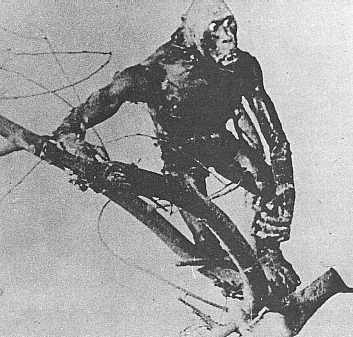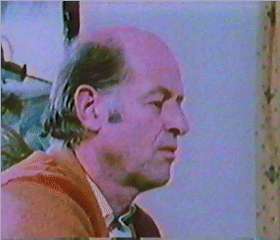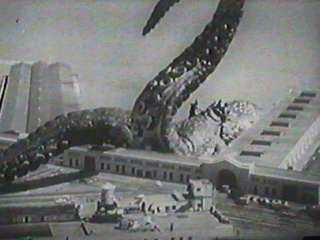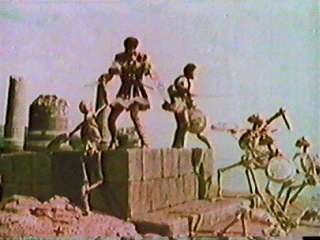pop up description layer
HOME
Cryptozoology UFO Mysteries Aviation Space & Time Dinosaurs Geology Archaeology Exploration 7 Wonders Surprising Science Troubled History Library Laboratory Attic Theater Store Index/Site Map Cyclorama
Search the Site: |
|
Stop-Motion Photography
Stop-motion (also referred to as stop-action) photography was one of the first "special effects" techniques ever invented. It is a form of animation and allows otherwise lifeless objects to move and change. Much of the early use of stop-motion in the cinema was to make models of dinosaurs apparently gallop by themselves. Stop-motion continues to be used today in commercials (like the singing California Raisins) and children's fantasies like Rudolf the Red Nosed Reindeer. Movies and television work by displaying to the viewer a series of pictures. Each picture is identical except for the action that is changing in the scene. If the images are flashed up fast enough (around ten a second) the brain will see them as a single picture with moving elements. This effect is known as persistence of vision. Motion pictures are usually projected at 24 frames a second and video at 30 frames a second (although this comes in the form of two interlaced half frames every 60th of a second). Motion picture cameras record by exposing frames (24 a second) one after another so that movement, like a person walking down a street, is captured. If the camera is pointed at an inanimate object, like a vase on a table, and the frames are exposed one at a time so that in between shots the vase can be moved a fraction of an inch, then film when projected back at normal speed, will show the vase apparently moving by itself. The same can be done with elaborate jointed models on miniature sets to give the impression that the models are alive and walking around by themselves. In addition to models, clay and drawings are often used with this technique. When drawings are used it is generally referred to as cartoon animation. One of the earliest shorts produced using stop-motion was The Missing Link. Willis O'Brien, a pioneer of stop-motion, completed this comedy in 1916. O'Brien went on to later do the stop-motion for The Lost World in 1925. His most well-known work was King Kong (1933).
O'Brien's work inspired a new generation of stop-motion artists including Ray Harryhausen (left). Harryhausen worked on dozens of films animating everything from dinosaurs and dragons to an army of sword-fighting human skeletons for the film Jason and the Argonauts. Harryhausen was the premier stop-motion animator of his day, and his name on the film was every bit as important a draw as the lead actors. Stop-motion photography requires long hours of hard work to produce even a few seconds of film. A single error can cause many days worth of material to be lost. For this reason, the camera, set and models are carefully clamped down to eliminate unexpected movement between shooting each frame. In King Kong, much of the miniature foliage was actually made out of metal to keep it rock steady. The Kong crew ran into trouble while filming one sequence when a live primrose plant, used in a jungle scene, went into bloom one day during filming. Nobody noticed this until the film was developed and viewed. In the background appeared a perfect time-lapse sequence of a white flower opening. The entire scene, a day's work, had to be re-shot. The Kong crew also ran into trouble with the rabbit fur that covered the eighteen-inch-high Kong model used in the production. As the animators adjusted the Kong model in between shooting frames, their hands disturbed the hair. The producers of the film were appalled when these showed up as obvious ripples on the head and shoulders of Kong during an important screening for studio executives. Fortunately one of the VIPs cried out in excitement, "Hey, Kong is mad! Look at him bristle!"
Since producing stop-motion sequences were so labor intensive and expensive, animators often had to find unique ways to cut costs during production. Ray Harryhausen, while filming It Came From Beneath the Sea (right), the saga of a giant irradiated octopus that ate San Fransico, was forced to reduce the number of arms on the octopus model from eight to six to help keep the picture on budget. Harryhausen also came up with a split-screen process that allowed the stop motion models to be placed in scenes with real buildings and people. This lowered the costs of producion and made the action seem more realistic. Harryhausen called this process Dynamation. Despite the careful work of artists, like Harryhausen, stop-motion photography had some inherent limitations. One of the most important is its inability to accurately represent quick motion. When a man runs by a camera during traditional filming, his movement is quick enough to cause a blur on each frame. An animated dinosaur running by the camera will not blur because each frame is a photograph of a still model. Our eyes can perceive the difference and stop-motion dinosaurs which are running will always seem to move in a staccato fashion. George Lucas tried to solve this in Return of the Jedi, through a method he called go-motion. It involved filming a puppet at high speed. Because the action was not stopped a proper blur was recorded, but since the monster puppet was being photographed in real-time, it was limited in the actions it could perform.
Computer animation has now replaced stop-motion in almost every application where the film maker is trying to create a realistic effect. In computer animation the model is constructed within the memory of the computer. This allows the model to be more versatile and detailed. The computer can also blur frames to simulate movement and it is easy to go back and make changes in the middle of a scene, something that was impossible with the older stop-motion method. Computer animation is so effective that in the film Jurassic Park it is impossible to tell the full-sized dinosaur puppets from the computer-generated animals. Stop-motion isn't completely gone, however. Sometimes film-makers prefer it because of the special style it gives the picture. Two recent successful productions, The Nightmare Before Christmas, and James and the Giant Peach, were filmed almost entirely using this technique.
Copyright Lee Krystek 1996. All Rights Reserved. |
|
Related Links |
|
|







